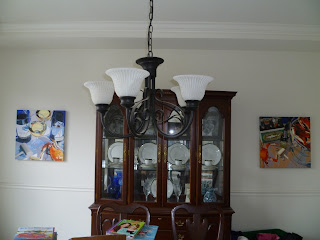Blisters are a common foot problem for runners. Caused by friction, heat, dirt,
moisture, and shoes that are too small, blisters are small bubbles of skin that
are typically filled with clear fluid. Some blisters are painless; others are extremely
painful, forcing you to discontinue your run.
“Friction
causes layers of skin to separate and foot blisters are the painful pockets of
air or fluid that form between the layers,” says Lori Weisenfeld, M.D., a New
York City sports podiatrist.
| Animated pic used to spare you from totally gruesome blister pics online. |
To avoid blisters, which, according to
running.about.com, “ are usually caused by friction, typically between skin and
sock,” and excessive moisture due to sweaty feet or wet conditions, avoid
running in wet shoes or during heavy rain, and be sure to use socks made
specifically for running. Socks should be made of synthetic fabrics, not
cotton, to wick moisture away from your feet and prevent the sock from bunching
up. Socks should also be smooth and seamless. For an additional layer of
protection, consider coating problem areas with a layer of Body Glide or
Vaseline, or covering “hot spots” on your feet with carefully applied moleskin,
a softer, more breathable bandage alternative.
Wearing running shoes that are too small, or
otherwise ill-fitting, or tied too tight can also cause blisters, so be sure to
make sure your shoes fit properly. Since your feet swell when you run, running
shoes should be at least a half size larger than your regular shoes and should
have extra room in the toe box. Break in
new shoes slowly and consider wearing them around the house for a few days
before running in them to determine if they are rubbing anywhere.
Calluses provide blister protection for your feet
so, if you go for a pedicure, be sure calluses are not removed with a razor or
emery board; doing so, running.about.com warns, could put you at a greater risk
for blisters.
| Doing this can increase your risk of blisters and infection |
If you already have a blister, to pop or not to pop
is always the question. If the blister
is not painful, simply leave it alone; it will eventually break and drain and,
meanwhile, the skin serves as protection and prevents infection. If the blister is painful or debilitating, or
if you need to drain a blister so you can continue with the activity that
caused the blister, you need to do so in a clean, sterile and safe manner.
| Use a sterile needle to pierce a blister where it meets the skin |
Sterilize a needle by boiling it for several minutes
or, wash it with soap and water and then rub with alcohol. Clean the area
around the blister and carefully piece the blister where it meets the skin,
allowing the fluid to drain out. Leave the remaining skin intact, apply an
antibiotic cream, and cover with gauze and moleskin or a Band Aid to provide
cushioning and help prevent infection. Change your bandage daily and allow the
area to air dry when possible. Womenshealthmag.com
notes that the deeper the blister, the longer it will take to heal.
Although blisters are common and most are easy to
treat, if you feel uncomfortable treating it on your own or suspect that the
blister may be infected, contact your local podiatrist for professional
assistance.
| Keep your feet happy! Happy feet = happy runner! |

















































































